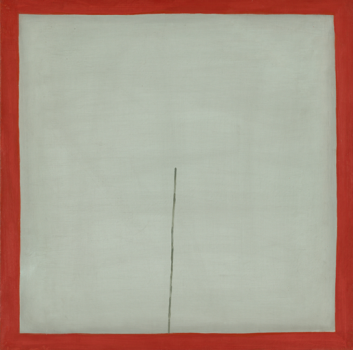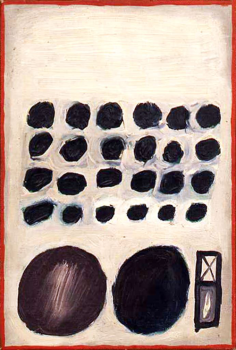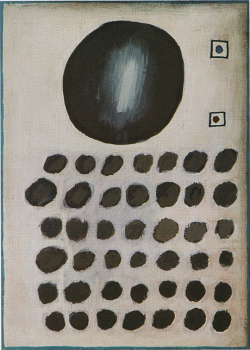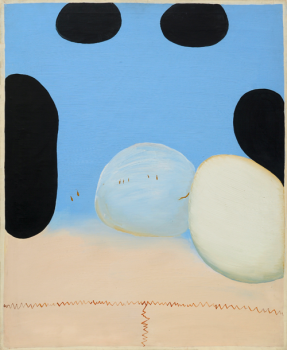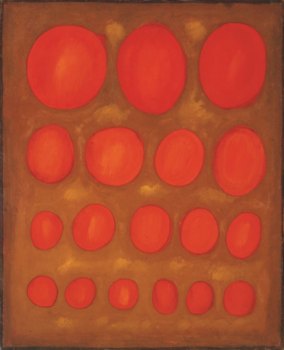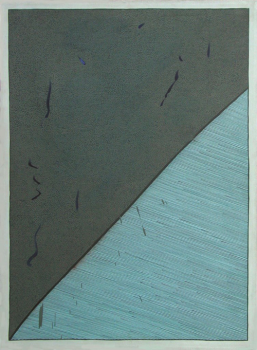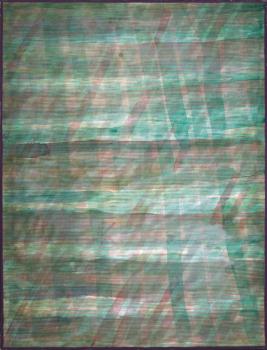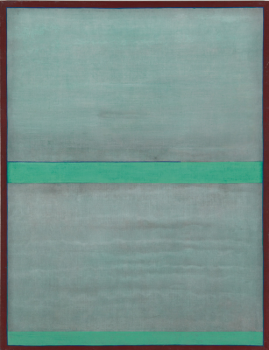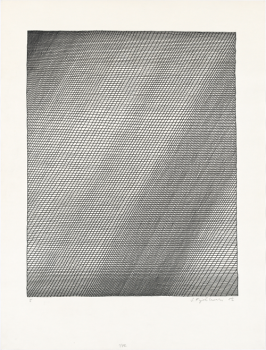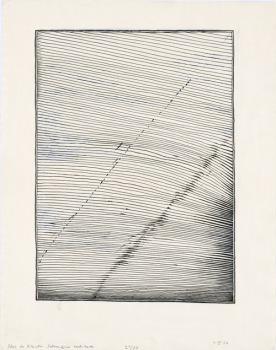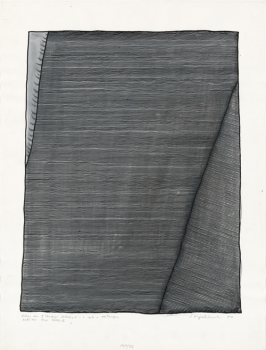Gallery exhibition
more about
Stanisław Fijalkowski, Sketch for linocut Talmudic Highway, 1987
Ink and watercolor on paper, 63 x 50 cm
Spanning a period of approximately sixty years, his body of work is a unique example of painterly abstraction. Following the revolutionary emergence of abstract art in both Western European and Russian avant-garde circles, Fijałkowski’s painting relied on the foundations of early modernism while reevaluating its ideological axioms and theoretical conclusions. His particular form of painterly abstraction avoids technical, disciplinary classification, transcending conventional, art-historical oppositions such as abstract/figurative, planar/linear, or painterly/graphic; it is both rational and cryptic, structural and gestural, narrative and speechless.
Stanisław Fijałkowski was born in 1922 in the southeastern corner of prewar Poland, a region that was soaked with blood in World War II and is now a part of Ukraine. After wandering from one place to another during the National Socialist occupation of Poland, the young Fijałkowski ended up in Königsberg as a forced laborer. In 1945 he settled in Łódź and became a student of Władysław Strzemiński, who had been a student of Kazimir Malevich and was a founding member of the radical Constructivist movement of the 1920s and ‘30s in Poland.
The war delayed Stanisław Fijałkowski’s artistic education by six years, during the course of which he gradually developed his own personal stance with respect to the intellectual achievements of the twentieth century. He thus began his search for a new synthesis out of the postwar rubble of modernism—a synthesis that would take into account a different spectrum of values, distinguishing him from the artists before him as well as from his contemporary counterparts.
Sein Werk, das eine Zeitspanne von nahezu sechzig Jahren umfasst, ist einzigartig innerhalb der abstrakten Malerei. Anknüpfend an die revolutionären Anfänge der abstrakten Kunst in den westeuropäischen und russischen Avantgarde-Zirkeln, berief sich Fijałkowskis Malerei auf Grundlagen der frühen Moderne, deutete deren ideologischen Axiome und theoretischen Aussagen jedoch neu. Seine besondere Form der abstrakten Malerei entzieht sich der Kategorisierung nach Techniken oder Disziplinen und geht über herkömmliche kunsthistorische Gegensätze wie abstrakt/figurativ, flächig/linear oder malerisch/grafisch hinaus; sie ist zugleich rational und geheimnisvoll, konstruktiv und gestisch, narrativ und jenseits von Sprache.
Stanisław Fijałkowski wurde 1922 im südöstlichen Teil Vorkriegspolens geboren, einer Region, die im Zweiten Weltkrieg von Blut getränkt war und heute zur Ukraine gehört. Während der Nationalsozialistischen Besatzung Polens irrte der junge Fijałkowski von Ort zu Ort, kam schließlich als Zwangsarbeiter nach Königsberg. Er ließ sich 1945 in Łódź nieder und studierte bei Władysław Strzemiński, der seinerseits Student von Kasimir Malewitsch und ein Gründungsmitglied der Bewegung des Radikalen Konstruktivismus im Polen der 1920er- und 30er-Jahre gewesen war.
Der Krieg verzögerte Stanisław Fijałkowskis künstlerische Ausbildung um sechs Jahre, in denen er allmählich seine eigene, persönliche Haltung hinsichtlich der geistigen Errungenschaften des 20. Jahrhunderts entwickelte. So begann er seine Suche nach einer neuen Synthese unmittelbar aus den Nachkriegs-Trümmern der Moderne heraus – eine Synthese, die von einer anderen Werteskala ausgehen würde, und die ihn von den Künstlern vor ihm, aber auch von seinen zeitgenössischen Kollegen unterscheidet.
